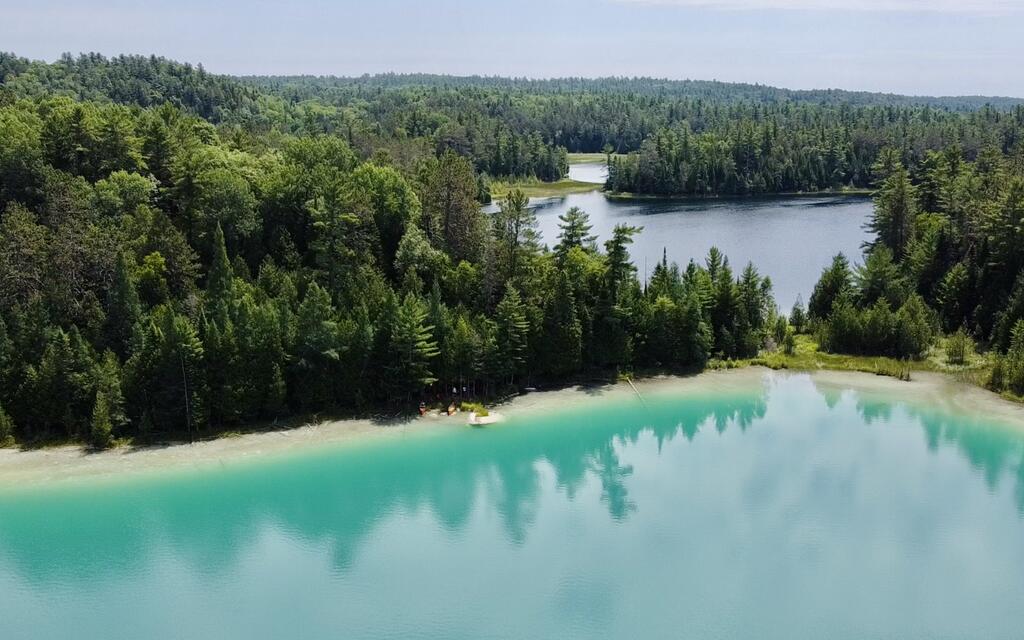I grew up spending the summers of my childhood in and around the Mineral Capital of Canada: Bancroft. I never thought too much of that title then.
My parents would take us to the museum and gift shop in town every so often, and I was always enamoured with the rock collections (I mean shiny trinkets as an easily distracted child? Kind of goes hand in hand).
I remember once I convinced them to buy me what was a whole sheet of card paper with about 20 different minerals and gemstones attached to it and labelled. I loved it.
Pyrite (fools gold) and purple amethyst were my two favourites, and when I was asked if, at thirty nine, I would want to take a mineral tour in Haliburton, “hell yah” was my answer.
Leaving my house that morning I really wondered what we’d learn that I wasn’t already kind of familiar with, as far as how the minerals are formed and where you might tend to find them. I typed “Greenmantle” into my GPS, and it auto populated with “Esson Creek Maple & Greenmantle Mineral Tours”, I clicked on it to start the directions.
And boy was I wrong about my knowledge.
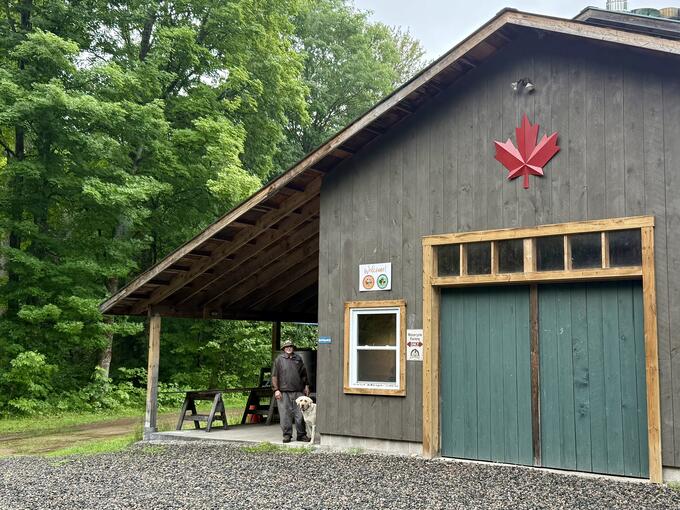
Stepping out of the truck, we were met with two huskies, a golden lab, and of course Mark.
Mark began our tour inside their beautiful sugar shack, showing us maps of the world, explaining just how the world began to change and shift over 200 million years ago. How the supercontinent known to us as Pangea began to break apart to form the world as we now know it, and he was going to show us the results of all that change with our own eyes.
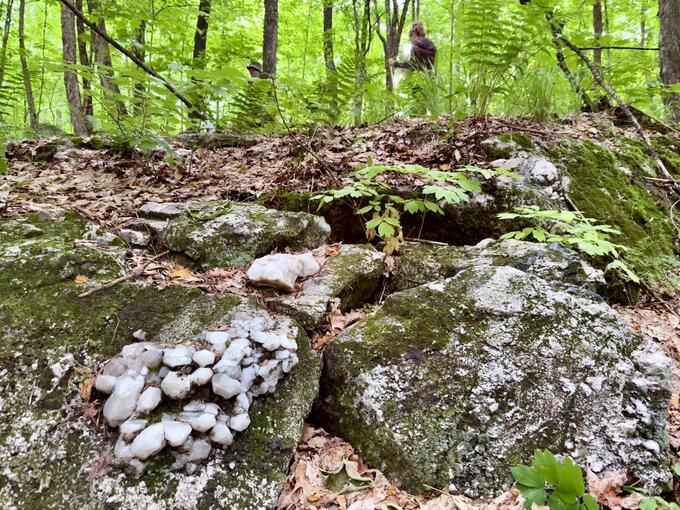
Mark and his family have worked incredibly hard for decades, fighting for and now holding the only mining rights; all to never mine or pillage the land at all, and the tours here directly contribute to their extraordinary efforts in conservation.
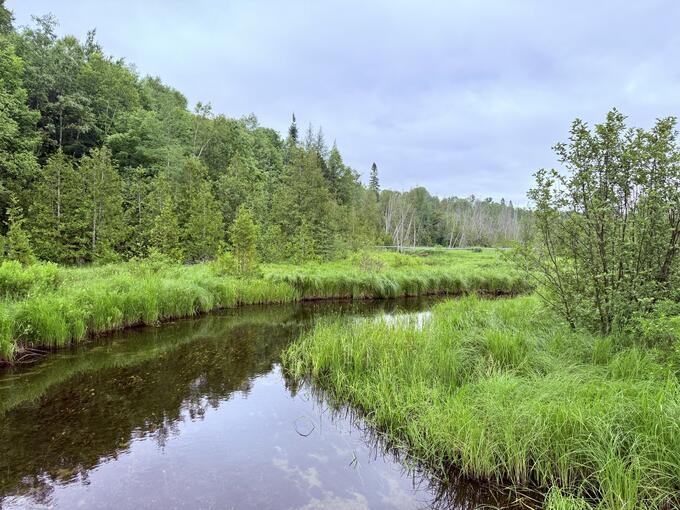
Greenmantle provides a rare opportunity to see pristine mineral deposits (the only known location of the rare mineral fluoro-richterite in Canada) and understand just how the rock beneath us shapes the natural world. This undisturbed geology has been enriching the soil since the last ice age, making it a natural haven for thriving maple trees. The “flight” of syrups we taste tested on the way out made all of that abundantly clear to our taste buds.
We hopped back into the truck with a few jugs of liquid gold in tow, and a new sense of wonder for what lies beneath the ground all around us.
With all of the backpacking gear we’d need finally packed into the truck (and of course a third and fourth run back into the house for several almost forgotten items on the packing list), and we had just one more stop to make before our final (well, almost final) destination.
My twelve year old niece in tow for the trip, we had to decide on and pick up something to cook by campfire that night, and visiting the Ontario Water Buffalo Company made the top of our list.
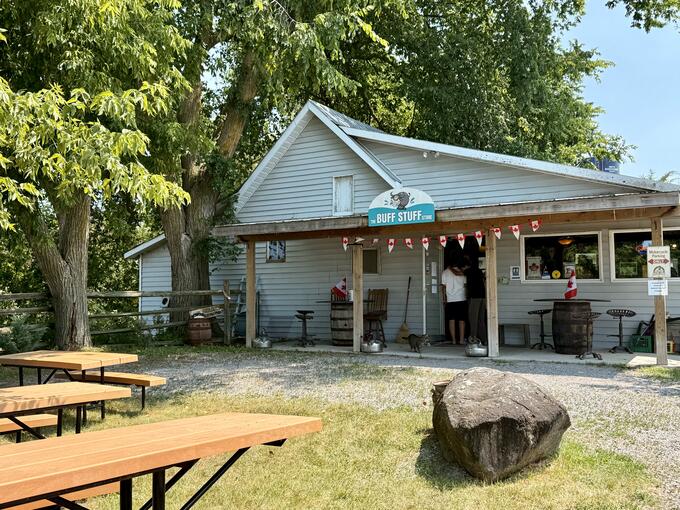
Arriving at the farm we first checked out the Buff Stuff store, gawking at all of the products they offer—we didn’t know where to look first. From the milk to mozzarella, tallow for skin care, soap, bacon, burgers, every cut of steak you can imagine, beautiful souvenirs (some even hand carved from horn), right down to their delectable gelato; nothing was going to waste here.
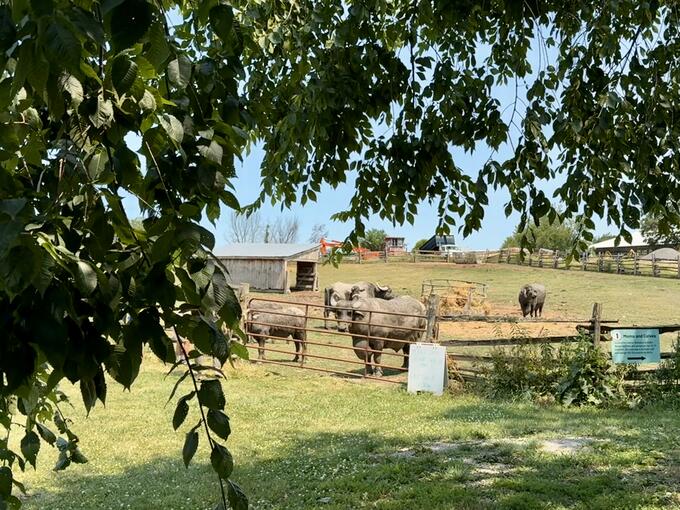
We chose flavours of rich gelato (a tiny cup is enough! This isn’t your typical ice cream) and walked around the farm on a self guided tour; seeing all the work going on behind the scenes, and how the animals are cared for. This isn’t simply a petting zoo, it’s a real working farm with their doors and hearts wide open to the public.
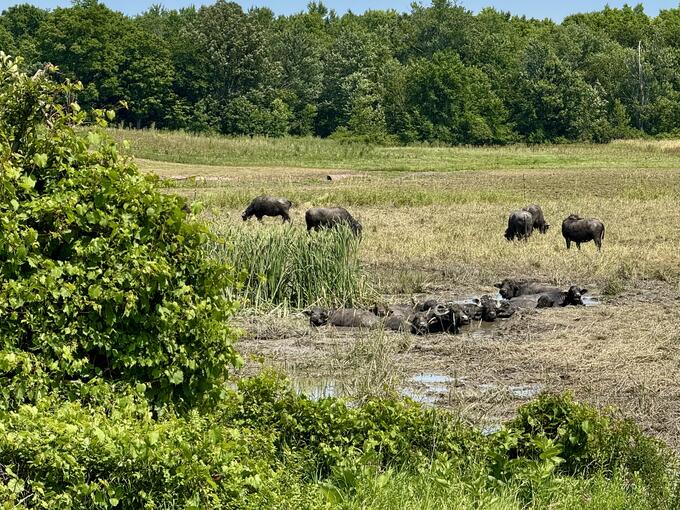
The buffalo are grass fed and roaming free most of their time; being able to visit and see how their lives here mimic how they’d live in the wild (complete with mud wallowing) was incredibly meaningful. When animals live well, their meat is not only more ethical, but healthier, too.
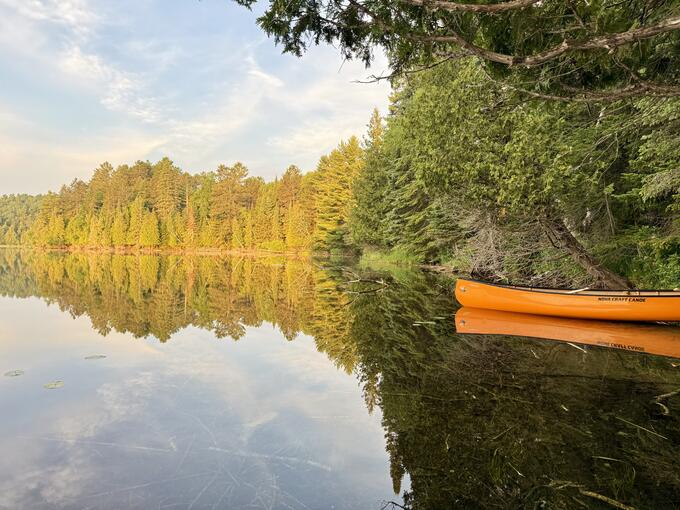
A few short hours after our trip started, the sun high and hot, we rolled up to the entrance of Land’escapes. The deer fly swarmed to the heat radiating from the truck, signalling that the thick of summer was definitely here. One hundred square kilometres of wilderness were within reach just beyond these gates. Moose, elk, deer and bear are among the many creatures who call this place home, but it wasn’t always so peaceful.

We met with the park’s operations manager, Greg, at the gate house. A deeply knowledgeable guy (he’s spent years in the bush and it shows), but he wears that knowledge lightly.
He’s the kind of guy who’ll teach you something without making you feel like you should already know it. Humble, practical, and quietly passionate, he’s the real deal: a steward of the land who lets the work speak for itself.
Greg had already grabbed us a paper map, and outlined where our camp site was, where our planned hike into another lake for the next day was, and explained where we were going to park and access the trailhead. He set us up with the extra equipment we had planned on renting from the park (you can quite literally rent it all from these guys), and we were on our way.
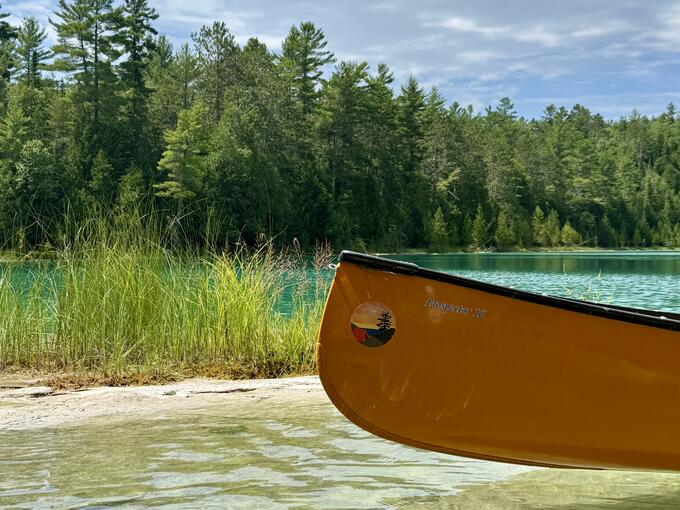
In and out of cell service as we travelled an old logging road in the truck, feeling every rock and divot and swale we rolled over, “the bumpier the access road the better the trip” is the saying, isn’t it? Though we had downloaded the fancy satellite map application with a custom base layer that the park created; having that little paper map tucked away was just that extra assurance I like to have when heading into the unknown, and besides, relying fully on electronics might get you into a pickle out here.
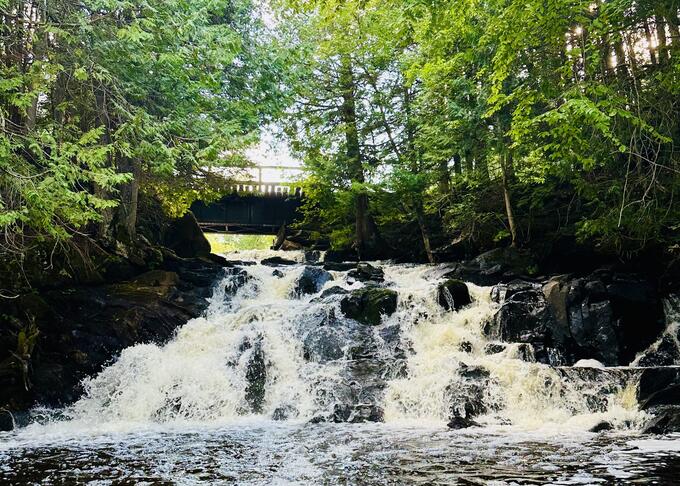
We finally got to the lot, packed up our gear and set out into the heart of the forest where stumps and overgrown roads quietly hinted at a past shaped by industry. This land was once part of a large-scale logging operation, and you can still feel the echoes of that era in the landscape.

Surprisingly the deer flies didn’t bother us much as we meandered through the forest, making conversation and laughter (a great way to not accidentally sneak up on wildlife) on our way to the lake we planned to camp on. Land’escapes is different in that each lake has a “canoe cache”, meaning you don’t have to actually portage a boat in at all. Just hike yourself and your gear in, and their beautiful canoes with all the fittings are waiting for you at the shore.
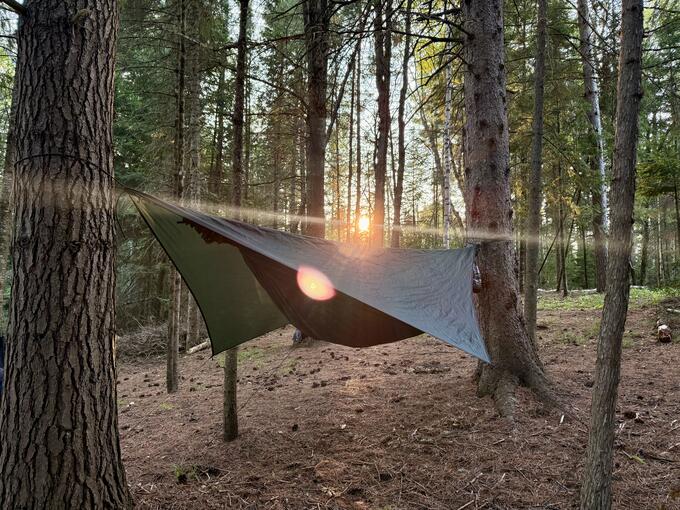
Arriving to our site by canoe we made quick work of getting unpacked, gathering firewood, setting up our hammocks (our beds!), and breathing in the beauty that surrounded us. If you have experienced backcountry and you’re anything like me, you’ll love that they have ready-made bear hangs at each site to safely store your food bag out of a bears (and more likely the very bold raccoons) reach.
What a load off not having to worry about picking a suitable tree. Just follow the markers and you’ll find it.
And when “nature calls”? Well. It’s not a full outhouse. Not even a toilet seat.
Just a humble wooden box over a hole in the ground, placed very thoughtfully in the middle of a clearing like it was proud to be there. No walls, no door, just you, your thoughts, and the occasional squirrel making hard eye contact.
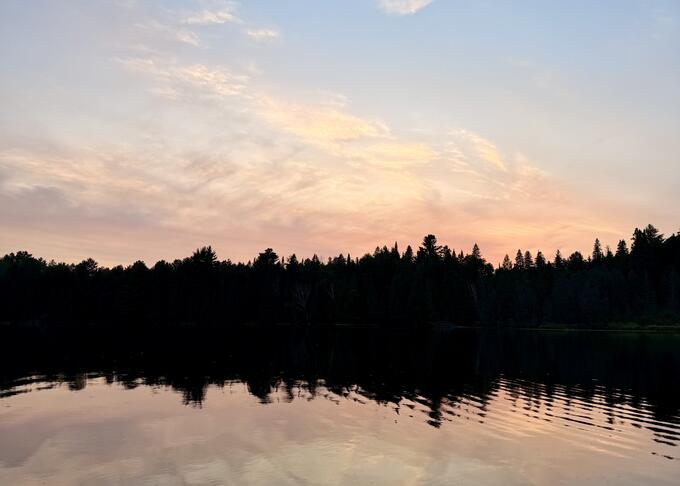
We hopped in the canoe and fished until dusk, because of course we did. There are some different rules here for fishing: no live bait, no soft plastics, no barbs, catch and release only. And when I first read these rules I thought, not even worms!?
Then I cast my first line here and completely understood why. This fishery is incredible, a place where you might actually get bored catching wild backcountry bass. My niece was delighted with the non-stop action, the whole reason I wanted to bring her along.
Exchange the iPad and wifi for a fishing rod for the weekend, and there were no complaints.
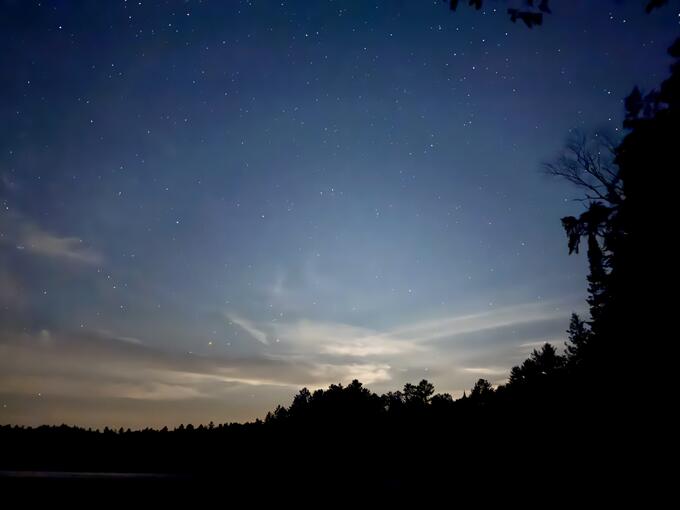
Back at camp we started a fire, and cooked our steaks. As we ate and chatted, my niece stopped for a minute and thoughtfully looked at her plate before saying “it’s a little weird how we’re eating the buffalo”. I agreed, and we talked about why it’s so important to know where our food comes from.
Much like the chickens in her backyard that give them eggs, knowing they get to have happy lives, living as naturally as possible, is something we should always look for. Ultimately we are grateful for those who sustain us and will try to never take these things for granted.
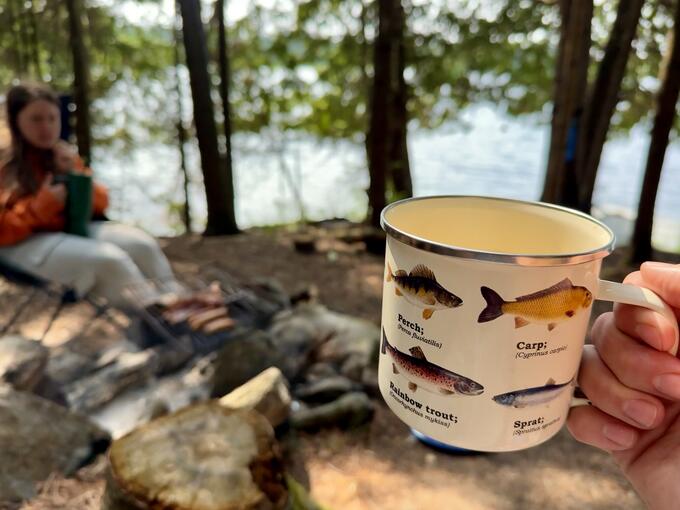
The next day we started our hike into a trio of lakes about an hour from where we were camped. We bushwhacked, and sweat through our clothes. We posted up at an empty site for a glorious swim and lunch break.
And no kidding, this kid landed the biggest largemouth bass of her life, feet from shore, on a barbless hook, and to say she was ecstatic is an understatement.
“THAT HIKE WAS SO WORTH IT!!” she squealed.
This is what it’s all about. A feeling seared into our memories we’ll cherish for life. She carefully lowered this huge fish back into the water and we all watched her vigorously swim back to the depths. High fives were had, the kid’s weekend was made.
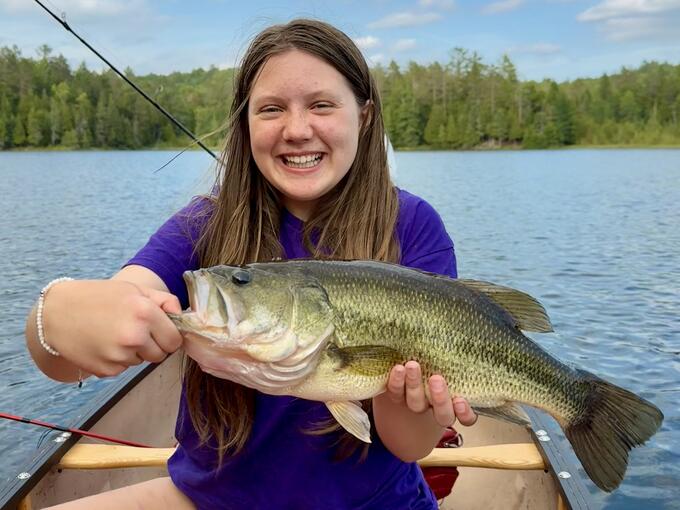
Since my first taste of portaging into the backcountry of Algonquin well over 20 years ago, I’ve felt a sense of belonging out there. I’ve never felt more at peace with myself than when I am covered in dirt, probably barefoot, and cooking over a fire.

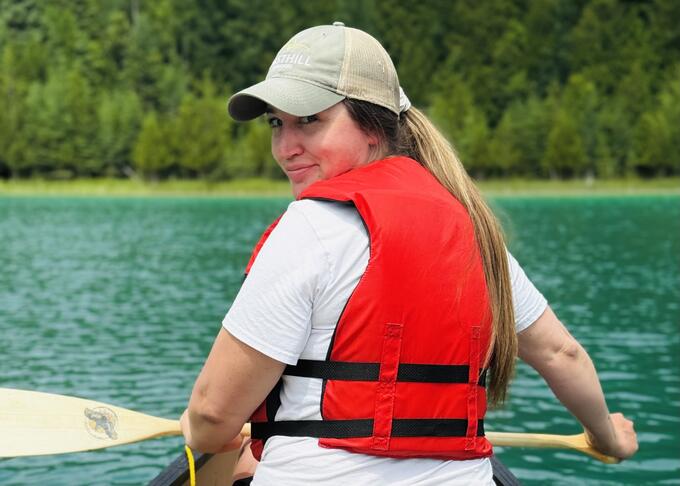
Land’escapes gives you that same feeling in your bones, and they are helping make access easier to anyone who might be new to all of this. Camping out here, you feel part of something bigger. And every paddle stroke, every step, every quiet night under the stars is a way of supporting that restoration.
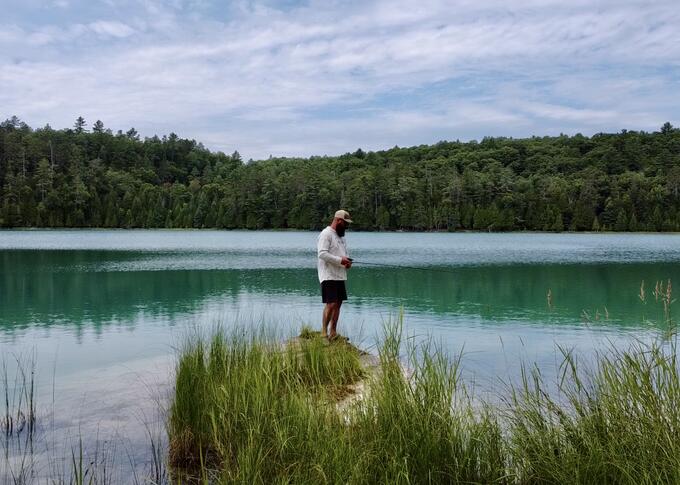
Back when I was a kid, staring at labelled rocks on cardboard, I didn’t understand what they really were, just that they felt important. Magical, even. That same wonder has stayed with me, but now I see the fuller story: the ground beneath us holds not only minerals, but memory, nourishment, and healing.
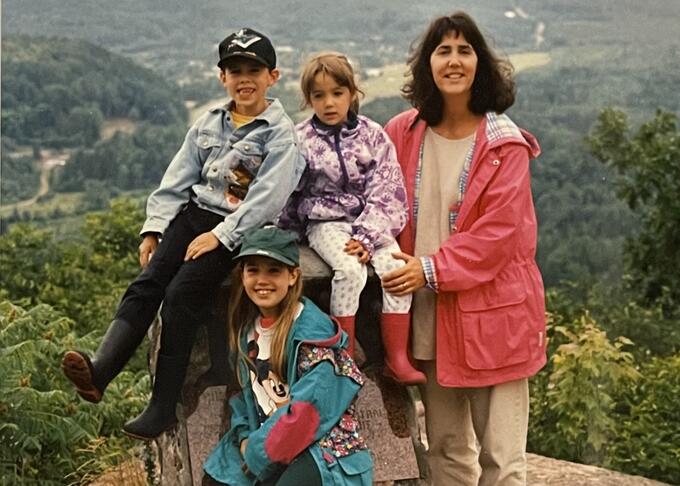
From ancient bedrock to buffalo pastures, from conservation fights to campfire nights, this trip reminded me of what I’ve always known somewhere deep down: I belong in wild places. And now, I get to pass that wonder on.
To my niece, to the next generation, to anyone willing to slow down, disconnect, and trust the land.
If the land had a voice, I think it would ask us to listen. Just long enough to remember how to live in rhythm with it. Out here, where wild things return and water runs clear again, you can feel the healing underway. It’s slow, quiet, and steady.
The land doesn’t need us to fix it, it just needs space, respect, and time.
And if we’re willing to listen, really listen, it might just heal us too.
